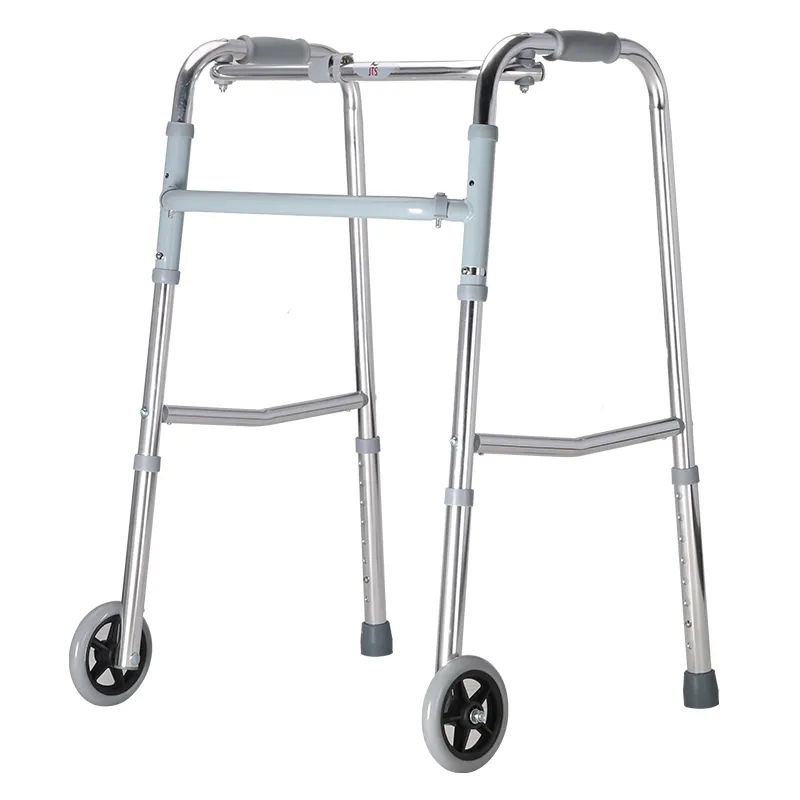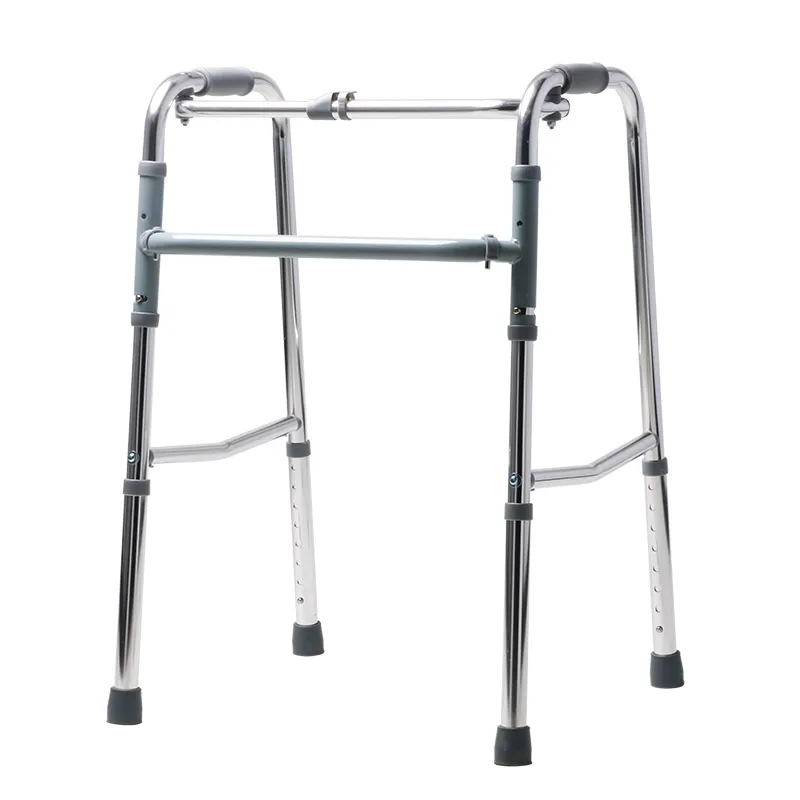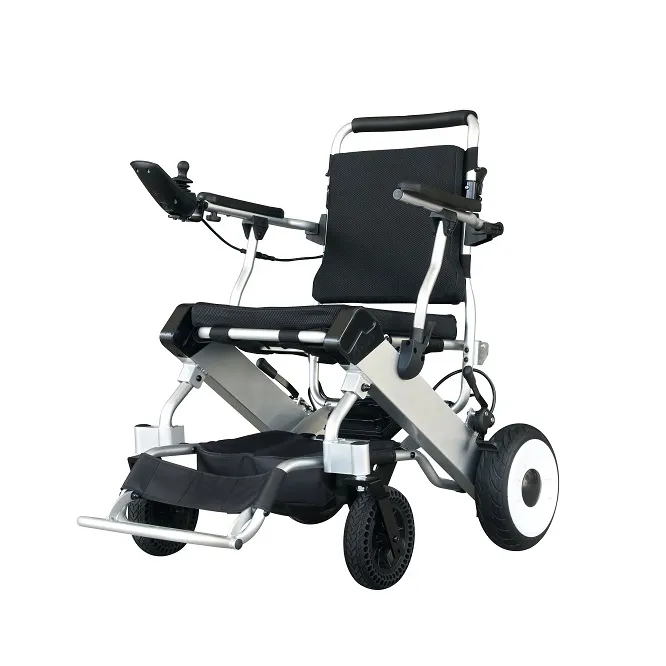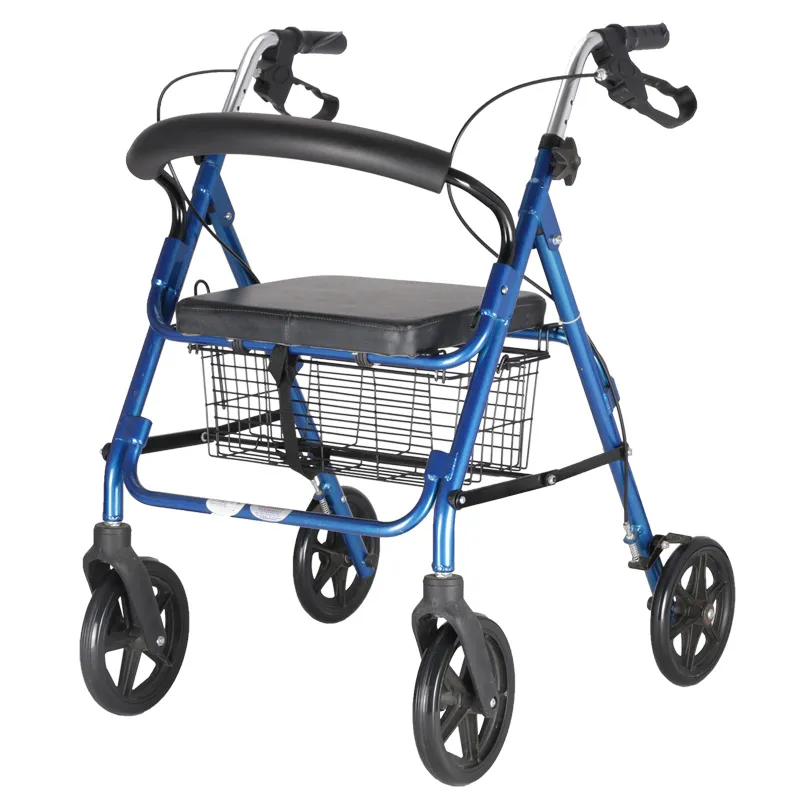A walking frame (or Zimmer frame) is a common walking aid used by the elderly, post-operative patients, and those with reduced mobility. It provides additional balance support, helping users maintain stability, reduce lower limb strain, and prevent falls.
However, not everyone is suitable for using a walking frame. If the user's physical condition, muscle strength, balance, or cognitive ability is not up to par, it may not only fail to provide assistance but could also lead to falls, muscle strain, or other safety hazards.
This article will systematically analyze from a professional rehabilitation medicine perspective who should not use a walking frame and what more suitable alternatives they can choose.

What is the function of a walking frame? Why can't everyone use it?
A walking frame is a simple yet functional rehabilitation aid. It typically consists of a lightweight metal frame that supports the user through four footholds or a wheeled structure.
Different types of walking frames (such as fixed, two-wheeled, and four-wheeled) can meet the needs of different stages of rehabilitation.
The main functions of a walking frame include:
• Providing balance support – helping the body maintain an upright posture and reducing swaying.
• Reduces lower limb load – Supports the body with upper limb strength, reducing lower limb pain.
• Prevents fall risk – Protects individuals with gait instability and lower limb weakness.
• Facilitates rehabilitation training – Used for walking training after surgery or during stroke rehabilitation.
However, while walking frames provide support, they are not a "panacea." Correct use of a walking frame requires the user to possess sufficient upper limb strength, balance, and cognitive judgment. If these conditions are not met, the walking frame may become a source of risk.
Who is unsuitable for using a walking frame? (Detailed Population Classification)
The following groups face significant risks when using a walking frame and should use it with caution or avoid it altogether:
1. Can people who are completely unable to maintain balance use a walking frame?
No.
The core function of a walking frame is "balance assistance," not "complete support."
If a person cannot maintain an upright posture even for a few seconds after leaving the support, it indicates extremely poor body balance control. At this point, even with a walking frame, it's difficult to prevent falls.
Reasons:
• The walking frame only provides partial support; the user still controls their own center of gravity.
• When the body tilts excessively, the walking frame is easily pulled over.
• Individuals unable to self-correct their posture cannot safely operate a walking frame.
More suitable alternatives:
• Wheeled gait trainer: Provides stronger support and protection.
• Standing rehabilitation cart: Assists standing and walking in a professional environment.
• Manual or electric wheelchair: Suitable for those completely unable to walk independently.

2. Can people with significantly insufficient upper limb strength safely use a walking frame?
No.
Using a walking frame requires strong upper limb support. Each step relies on the arms to "lift" or "push" forward part of the body weight.
If upper limb strength is insufficient, the walking frame cannot provide enough support and may slip or slip, leading to loss of balance.
Common Risks:
• Hand and shoulder muscle fatigue, increasing the risk of falls;
• Inability to maintain a steady grip on the walking frame, leading to tilting or slipping;
• Hand tremors hinder precise movement control.
Typical Unsuitable Groups:
• Individuals with rheumatoid arthritis or wrist degeneration;
• Individuals with upper limb paralysis after stroke;
• Individuals with neurogenic myasthenia gravis.
Recommended Alternatives:
• Rollator: Reduces upper limb strain;
• Lightweight or electric wheelchair: Suitable for those unable to maintain a steady grip.
3. Can people with cognitive impairment or slowed reaction time use a zimmer frame?
Not recommended.
Although the zimmer frame has a simple structure, proper use still requires a certain level of judgment and coordination.
If the user has cognitive impairment (such as Alzheimer's disease, dementia, or slowed reaction time after brain injury), they may not understand how to move, turn, or stop correctly.
Risks include:
• Pushing the frame too quickly, causing a forward tilt of the center of gravity;
• Forgetting to maintain the correct posture or placement order;
• Collision with obstacles or accidental entry into dangerous areas.
Alternative options:
• Assisted walking by a caregiver or use of a fall brace;
• Four-wheeled walking aid (with brakes and a seat), to be used under supervision;
• Fixed gait support frame, used during training in rehabilitation facilities.
4. Can people with severe lower limb deformities or muscle atrophy use a zimmer frame?
In most cases, no.
A zimmer frame requires the user to be able to bear at least partial weight.
If the lower limb muscles are completely atrophied or the joints are severely deformed, making it impossible to land stably, the zimmer frame cannot provide sufficient mechanical support, easily leading to tipping.
Typical problems:
• Single leg deformity causing a shift in the center of gravity, making it difficult to balance the zimmer frame;
• Insufficient muscle strength to coordinate pushing;
• Prolonged use can easily lead to compensatory shoulder fatigue.
Suggested Alternatives:
• Supported gait trainer;
• Seated mobility scooter or adjustable chair.

5. Can visually impaired or spatially challenged individuals safely use a walking frame?
Independent use is not recommended.
Operating a walking frame relies on the user's visual judgment and spatial awareness.
If the user has impaired vision or cannot accurately judge distances or obstacle locations, collisions or falls are highly likely.
Possible Risks:
• Inability to recognize ground elevation differences;
• Bumping into furniture, steps, or corners;
• Difficulty discerning slopes in outdoor environments.
Recommended Alternatives:
• A combination of a guide cane and assistance system;
• A walking scooter with voice navigation or assisted guidance system (requires accompaniment);
• Indoor track support system.
6. Is a walking frame suitable for individuals with severe cardiopulmonary disease or those prone to fatigue?
Careful evaluation is required.
Walking frames require repeated lifting and pushing, increasing the strain on the upper limbs and chest muscles. For those with poor cardiopulmonary function, this activity may cause chest tightness, shortness of breath, or even fainting.
Risk Factors:
• Increased oxygen consumption during prolonged walking;
• Blood pressure fluctuations due to improper exertion;
• Shortness of breath affecting balance.
Suggested Alternatives:
• Four-wheeled walking aid with a seat for rest;
• Electric mobility scooter or lightweight electric wheelchair;
• Short-range gait training device as assessed by a physician.
7. Can overweight or obese individuals use a regular zimmer frame?
Not suitable in some cases.
The weight-bearing range of a regular zimmer frame is typically between 100–135 kg. If the user is overweight, it can cause structural deformation, loose welds, or premature wear of the footpads, thus affecting safety.
Potential hazards include:
• Uneven weight distribution on the walking frame's support points, leading to tipping;
• Instability during turns;
• Seat cushion (if applicable) breakage.
Alternatives:
• Reinforced walking frame (heavy-duty walker);
• Wide-body walking aid;
• Electric walking support vehicle.
8. Can people with unsuitable ground conditions use the walking frame?
It is not recommended for use in complex ground environments.
The walking frame is designed for flat surfaces, such as indoor tiles or wooden floors. If there are steps, ramps, or gravel on the ground, the walking frame is prone to slipping or getting stuck.
Hazardous scenarios include:
• Outdoor mud, grass, or gravel paths;
• Doorsteps, carpets, or electrical wires in the home;
• Slippery floors or narrow hallways.
Recommended alternatives:
• Rollator with large wheels, suitable for outdoor use;
• Cane-style assistive devices;
• Accompanying caregivers.

What are the basic requirements for using a zimmer frame?
During rehabilitation assessments, doctors or therapists typically determine suitability for a zimmer frame based on the following criteria:
• Lower limb muscle strength: Able to support more than 60% of body weight;
• Upper limb strength: Able to firmly grip the handles and lift the frame;
• Balance ability: Able to maintain a stable standing position for 10 seconds while stationary;
• Cognitive level: Understands how to move the zimmer frame and can distinguish a safe environment;
• Visual perception: Able to identify obstacles, slopes, and distances.
Only those who meet these criteria can walk safely with the assistance of a zimmer frame.

What are some common alternatives to zimmer frames?
For those who are not suitable for using a zimmer frame, there are various alternative assistive devices available on the market, which can be flexibly selected according to physical condition:
1. Rollator
• Suitable for: People with average balance, weak upper limbs, or who need rest and support.
• Features: Equipped with wheels, a braking system, and a seat, making walking easier and allowing for rest at any time.
• Advantages: Effortless, safe, suitable for outdoor use.
2. Gait Trainer
• Suitable for: Individuals completely unable to walk independently or with severe balance disorders.
• Features: Circumferential support structure provides multi-point stability; commonly used in rehabilitation centers.
• Advantages: Safe training, comprehensive support.
3. Manual or Electric Wheelchair
• Suitable for: Individuals with lower limb weakness or who are unable to stand for extended periods.
• Advantages: No need for continuous upper limb support; effortless movement; suitable for long-term use.
4. Cane, Axillary Cane, or Forearm Cane
• Suitable for: Individuals with mild walking difficulties or unilateral lower limb weakness.
• Advantages: Simple structure, portable; assists balance without restricting gait.
5. Transfer Assistive Devices
•Such as transfer chairs and standing armrests, suitable for patient transfers or short-distance movement.
•These devices reduce the burden on caregivers while ensuring user safety.
How to Choose the Right Assistive Device?
Before choosing a zimmer frame or its alternative, the following steps should be taken:
• Medical Assessment: A doctor or rehabilitation therapist assesses your physical condition;
• Environmental Assessment: Determine suitable equipment based on your home space and flooring materials;
• Trial and Adjustment: Experience the height, grip width, and weight during actual use;
• Safety Training: Learn the correct methods for starting, turning, and stopping.
Why do global buyers trust Dayang Medical?
Global buyers trust Dayang Medical because we are not only a manufacturer in China but also a professional supplier with more than 10 years of industry experience. Our company offers factory-direct sales, wholesale prices, and customized solutions for medical equipment. Every product, from electric wheelchairs to hospital beds and walkers, is made under strict ISO13485 and FDA certifications, ensuring high quality standards. Buyers who purchase from us enjoy low-price promotions, factory discounts, and transparent quotes.


